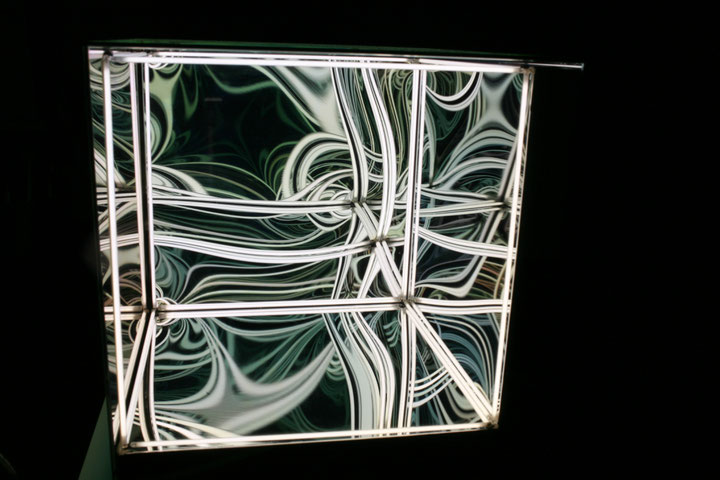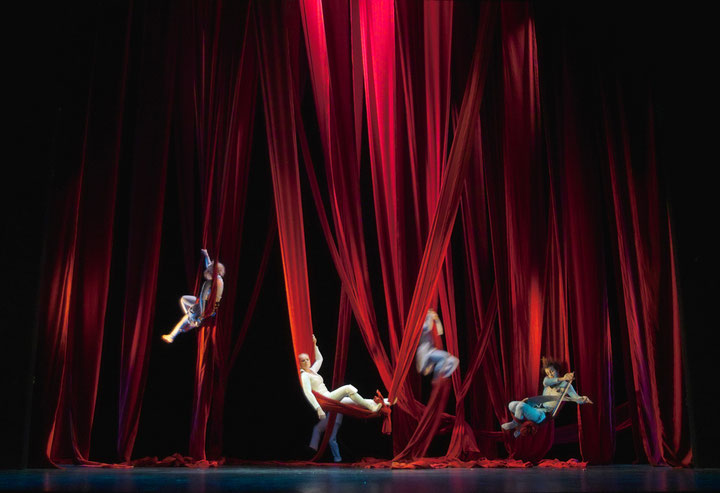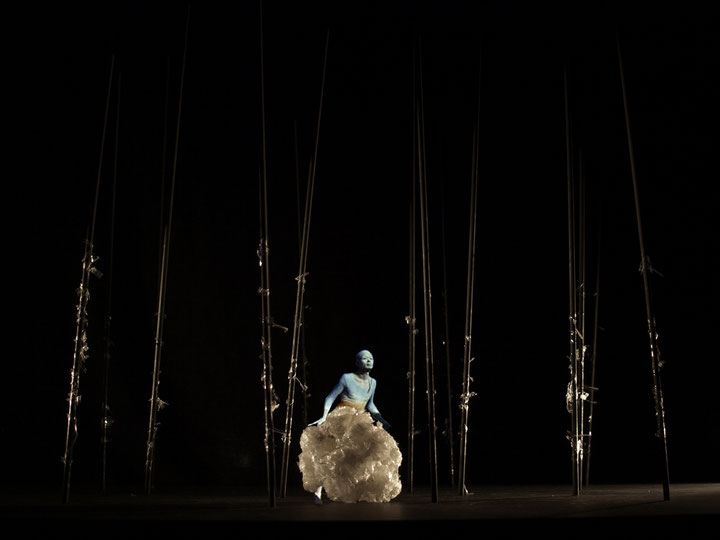When reflecting on his work in theatre design, the designer Christopher Katzler does not speak of single theatres, but of entire geographical areas: the Balkans and Spain for example. »When you work with a director, you travel from town to town with him.«
Translocal networking and the ability to adjust to varying production conditions are trademarks of the work of Katzler, Sven Jonke and Nikola Radeljkovic, who form the design studio numen/for use. Radeljkovic and Jonke studied design in the architecture department at the University of Zagreb, while Katzler completed his education at the University of Applied Arts Vienna. Today, numen/for use has offices in Vienna and Zagreb. In the early years, the designers would spend whole weeks together at the studio, but in the meantime the three of them are so attuned to working as a team that Skype conferences suffice.
Working for theatres with differing budgets requires the team to be conceptually flexible. If a theatre in Zagreb or Skopje has 20,000 euros at its disposal, the Deutsche Oper in Berlin will have 100,000 euros. However, sometimes small budgets can lead to particularly ingenious results. For example, the set for a production of William Shakespeare’s »A Midsummer Night’s Dream« consisted solely of a red curtain, cut into strips. These strips were used to create the illusion of an enchanted forest. They also proved suitable for acrobats, who enhanced the scenery’s fairy-tale atmosphere by climbing about on them. »Simple work can sometimes be very expensive,« says Katzler, countering the assumption that elaborate stage constructions can always be replaced by cheaper but better ideas.
The three creative talents enjoyed their first triumphs as furniture designers. While they were still completing their studies, they sent designs to Italian companies, and their ideas were developed and produced in series by well-known brands such as ClassiCon, Cappellini, Magis and Zanotta. Nonetheless, Katzler has mixed feelings about collaborating with industry. He notes that it is a highly competitive field. Manufacturers receive a variety of design ideas and pick the best. The flow of ideas coming from young designers has not abated. »Every architecture student does design.« This makes it all the harder for creatives to advance their visions to the status of finish products. »It’s like trying to fit through the eye of a needle.« Or not: the designers’ collaboration with a well-known Austrian furniture maker failed after three attempts.
In his office in Vienna, Katzler keeps one of the objects on display that pointed the way for him out of the tough competition in industrial design. It is a cube covered in mirrored foil, with lighting tubes attached to its edges. Looking inside the cube creates the illusion of peering down an endless hall of mirrors. Through the use of a pump, this mirror-effect causes an intense sensation of vertigo. The pump extracts air out of the cavity inside the cube, which causes the foil to contract and the space appear to dissolve. The studio numen/for use has employed such illusionist methods to create virtual worlds using analogue objects for a number of set designs, among them a dramatization of Dante’s »Inferno« at the Madrid National Theatre. The stage stretching into infinity symbolized the sinners’ eternal curse. The space took on an additional symbolic aspect by functioning similarly to a police interrogation room: what was happening on stage only became visible when it was more brightly lit than the auditorium in front of the mirrored wall. It was like looking into the cold hall of mirrors of a surveillance society.
The design for a conference on the topic of intercreativity held at the Odeon Theatre in Vienna is a further example of the studio’s skill in creating spatial situations from simple materials that can be used in a variety of different ways while maintaining their own suggestive, aesthetic value. Developed in collaboration with the graphic designer Erwin K. Bauer, the room design consists of strips of tape that are wrapped individually in further strips of tape to create a weight-bearing texture. Arches and funnels form a spider web spanning the entire room. The whole installation resembles the contorted spaces of deconstructivist architecture. »Although it’s made of plastic, the texture evokes associations to sticky, organic matter.«
In a recent project with the Croatian dancer and choreographer Matija Ferlin, an installation is generated by performers who stretch ribbons between the pillars of the hall. By doing so, they document their movements through the space. As they dance, the net becomes more and more tightly woven, until it is able to hold the dancers’ weight. With this installation, the designers have created a hybrid object: part set, part prop, part sculpture. These types of poetic, or autopoietic, rooms have been most successful with children. However, an increasing number of art institutions are becoming interested in numen/for use: recently, the Schirn Kunsthalle commissioned an installation for Frankfurt’s inner city.
Translated by Jennifer Taylor




